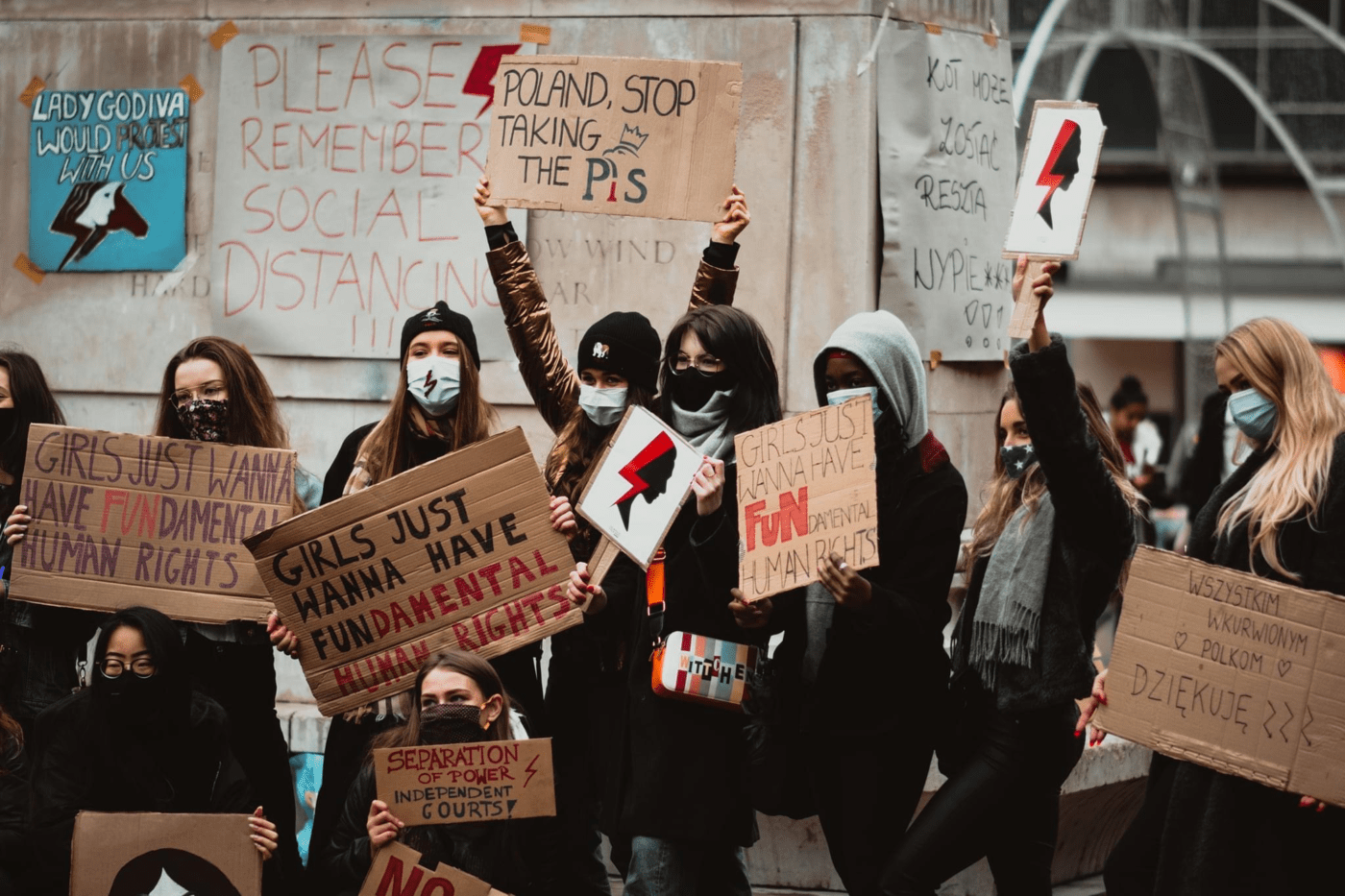The power of art in protests
Thousands of people on the streets, red lightnings on windows, face masks and banners: this is what revolution looks like in Poland. On 22 October, a constitutional tribunal ruled that abortions for fetus abnormalities violate Poland’s Constitution, which led to the country putting an almost absolute ban on abortion. This now means Poland has one of the strictest laws on abortion in Europe.
Violating fundamental human rights and predominantly male politics and politicians making decisions for women triggered a wave of protests that are still happening today. The red lightning became the symbol seen on marches not only in Poland, but also throughout Europe. The meaning behind it is simple and understandable in any language: a warning that Polish women will not stay silent and abandon their rights.
The red lightning became the symbol seen on marches not only in Poland, but also throughout Europe. The meaning behind it is simple and understandable in any language: a warning that Polish women will not stay silent and abandon their rights
Almost every person joining the protests arrives with a banner, sometimes printed but often hand made. This is where we see a new form of art being created, where the frustration and worry about the future can be visually displayed on a piece of cardboard. A museum in Gdansk started collecting these pieces in order to create an exhibition or a photo album that will commemorate this pinnacle moment in Polish history. The Museum of Modern Art in Warsaw opened up their space to exhibit banners from the strike. The installation is located in front of the museum and creates a “Banners’ Forest”, displaying the works of people who participated in the protests. The pieces vary from drawings of women, to slogans like “Woman is a Revolution”, “No woman, No country” “Girls Just want to have Fundamental human rights,” which are also usually accompanied by imagery.
This is where we see a new form of art being created, where the frustration and worry about the future can be visually displayed on a piece of cardboard
Due to those images and the red lightning symbol, people everywhere in the world can share their solidarity by re-posting these images on social media. It’s a great way to raise awareness and express the power that art has in activism. The dialogue begins here, with many women sharing their stories concerning abortion and how the current situation in Poland affects their lives. The artworks make an impact on us, as they are all over the internet, whilst also displayed in installations such as the one in Warsaw, mentioned above.
Throughout the few past weeks, protests have been happening both in Coventry and The University of Warwick. These were aimed to show unity with Polish women and men as well as raise awareness on this pressing matter. What could not be missed, was the artistic aspect of those protests. At Warwick, a shopping trolley was displaying signs expressing solidarity and fight for Polish women’s rights. In Coventry, next to Lady Godiva, many banners and posters could be seen accompanying the movement. You only had to see pictures from those marches to know that the power of art should never be underestimated.
Due to those images and the red lightning symbol, people everywhere in the world can share their solidarity by re-posting these images on social media. It’s a great way to raise awareness and express the power that art has in activism
However, there are some cases where the art in political movements could be deemed too powerful. In 2003, at the United Nations Headquarters in New York, outside the Security Council Chamber, a tapestry reproduction of Pablo Picasso’s anti-war mural “Guernica” is displayed. This art piece has been covered up before US Secretary of State Colin Powell’s presentation of the American case for war against Iraq. Most of the UN officials have claimed that this action was undertaken merely for a more effective scenery for the television broadcasters. Picasso’s interpretation of the event of Guernica is displaying the atrocities of war and has a direct impact on the viewer by showing the violence and brutality that was avoidable. The covering up of the tapestry can therefore be seen as the determination of the UN officials to not allow media and the public to have an anti-war sentiment evoked. The viewer could have many parallels appearing in their minds, between historical events and what is happening now, which could negatively affect the speech of the senator.

Comments